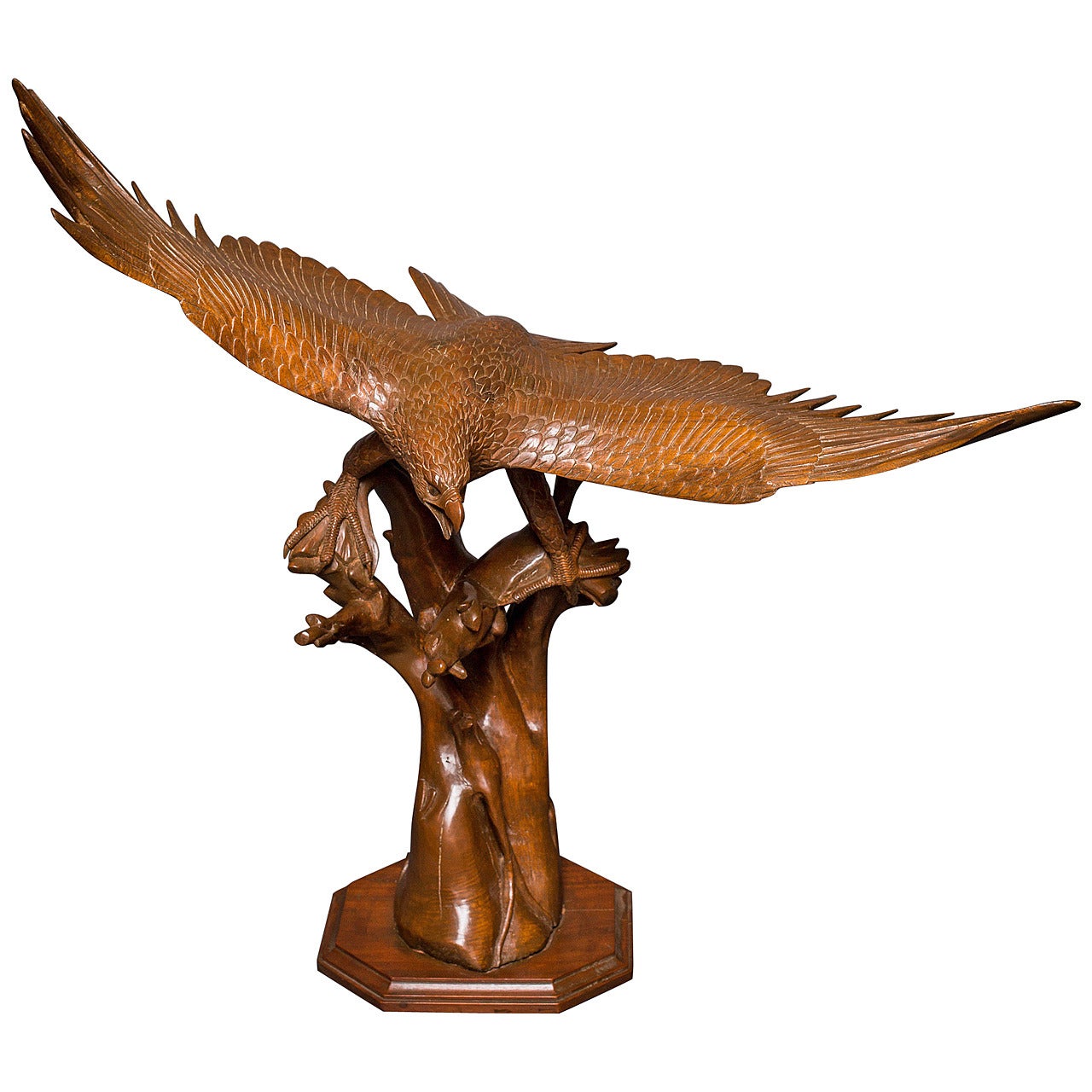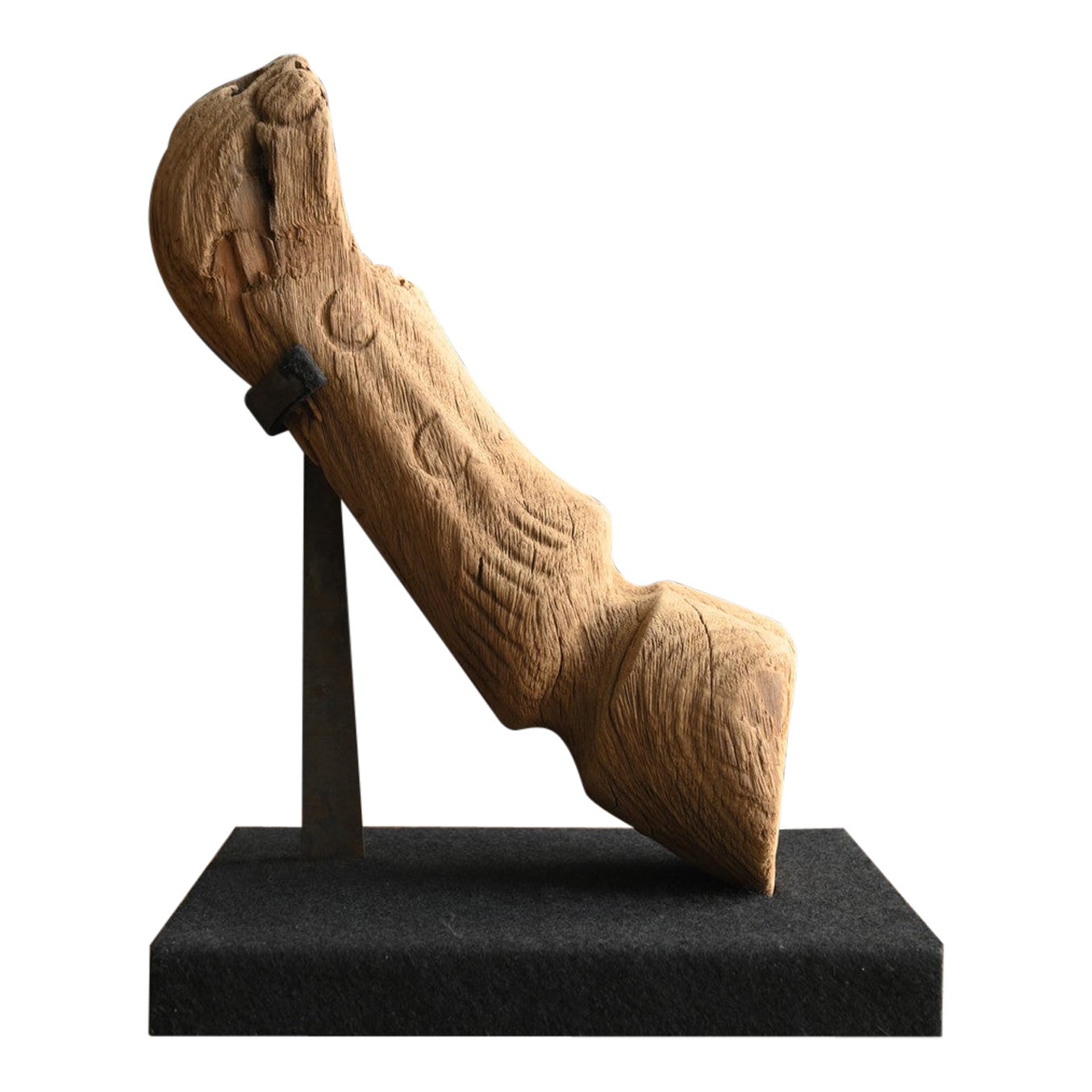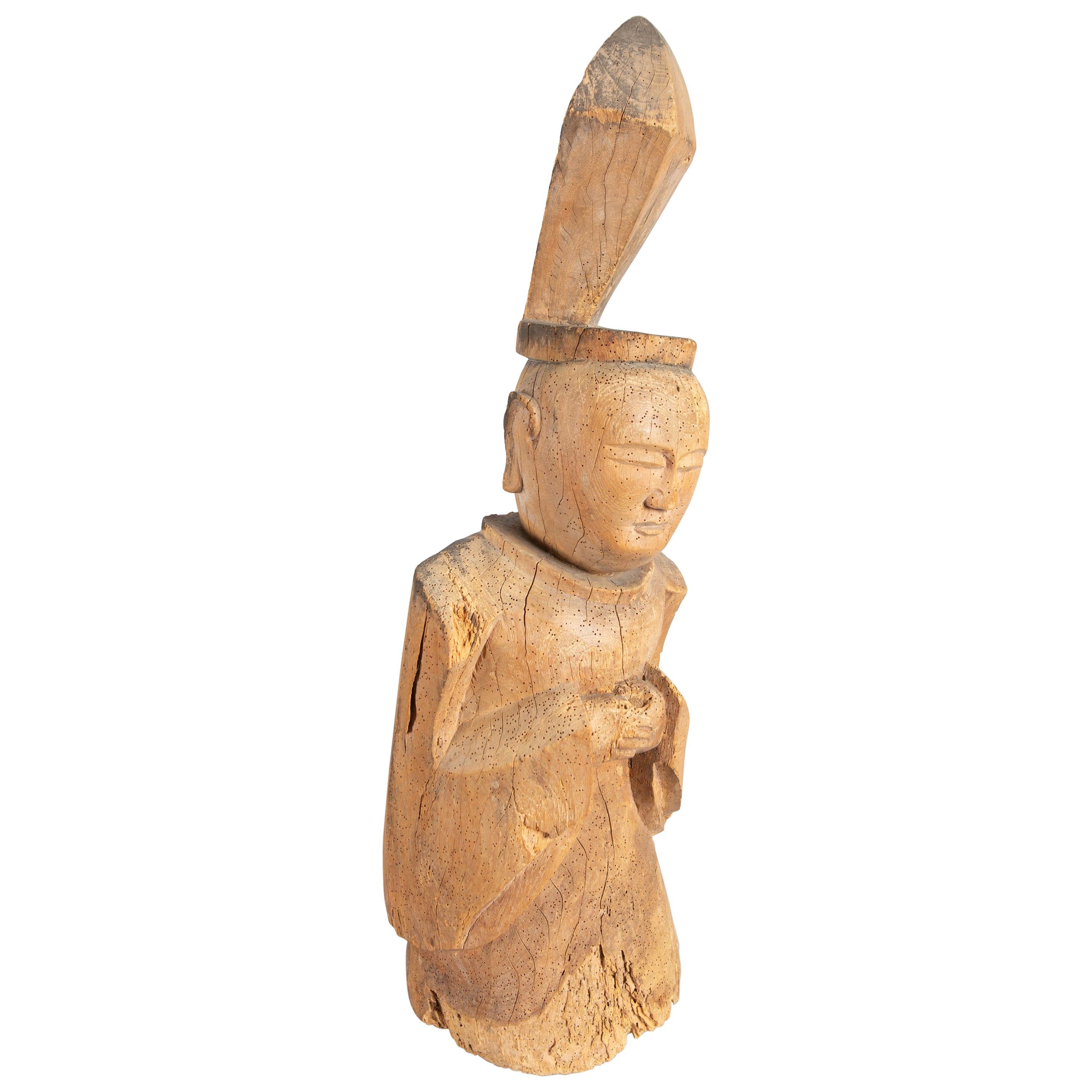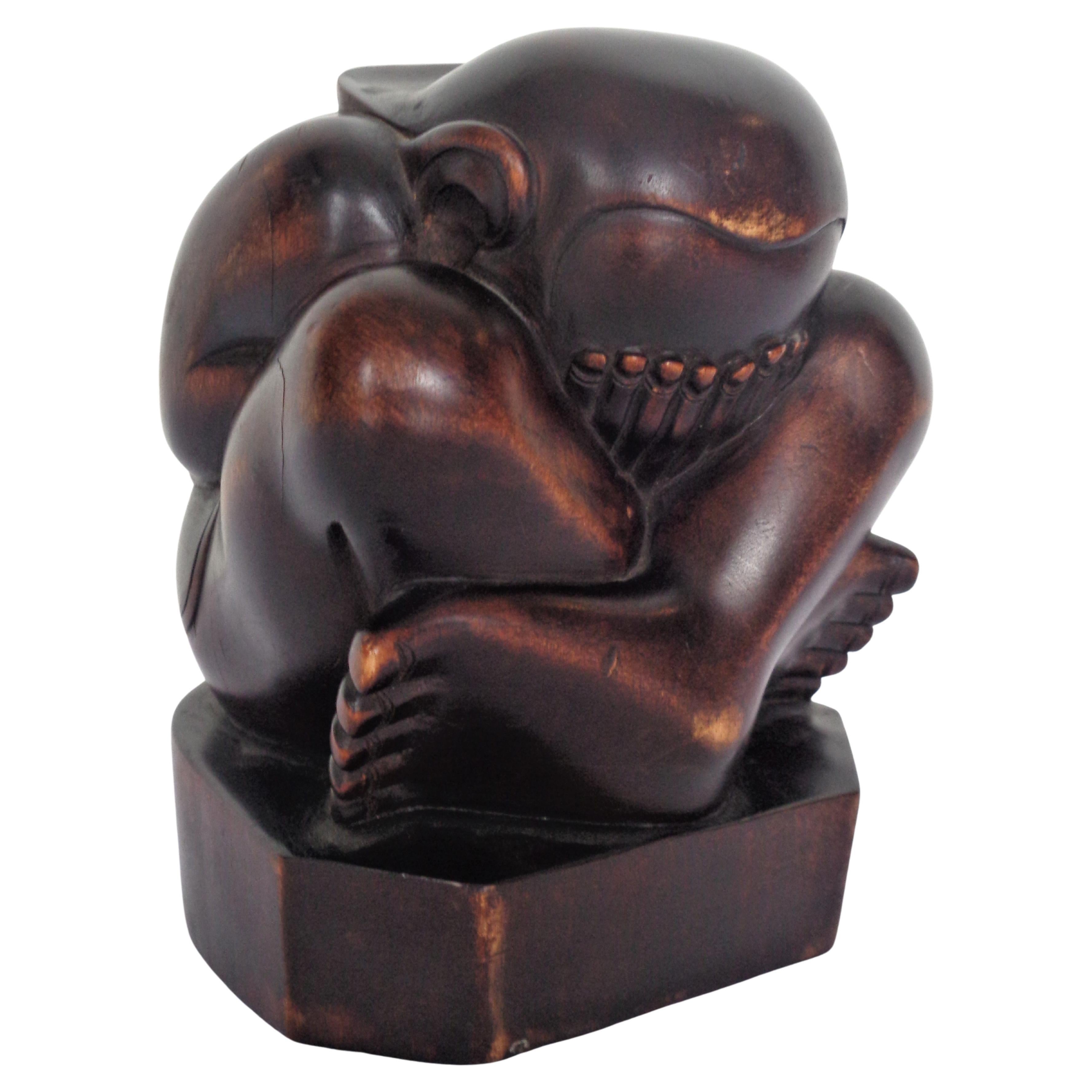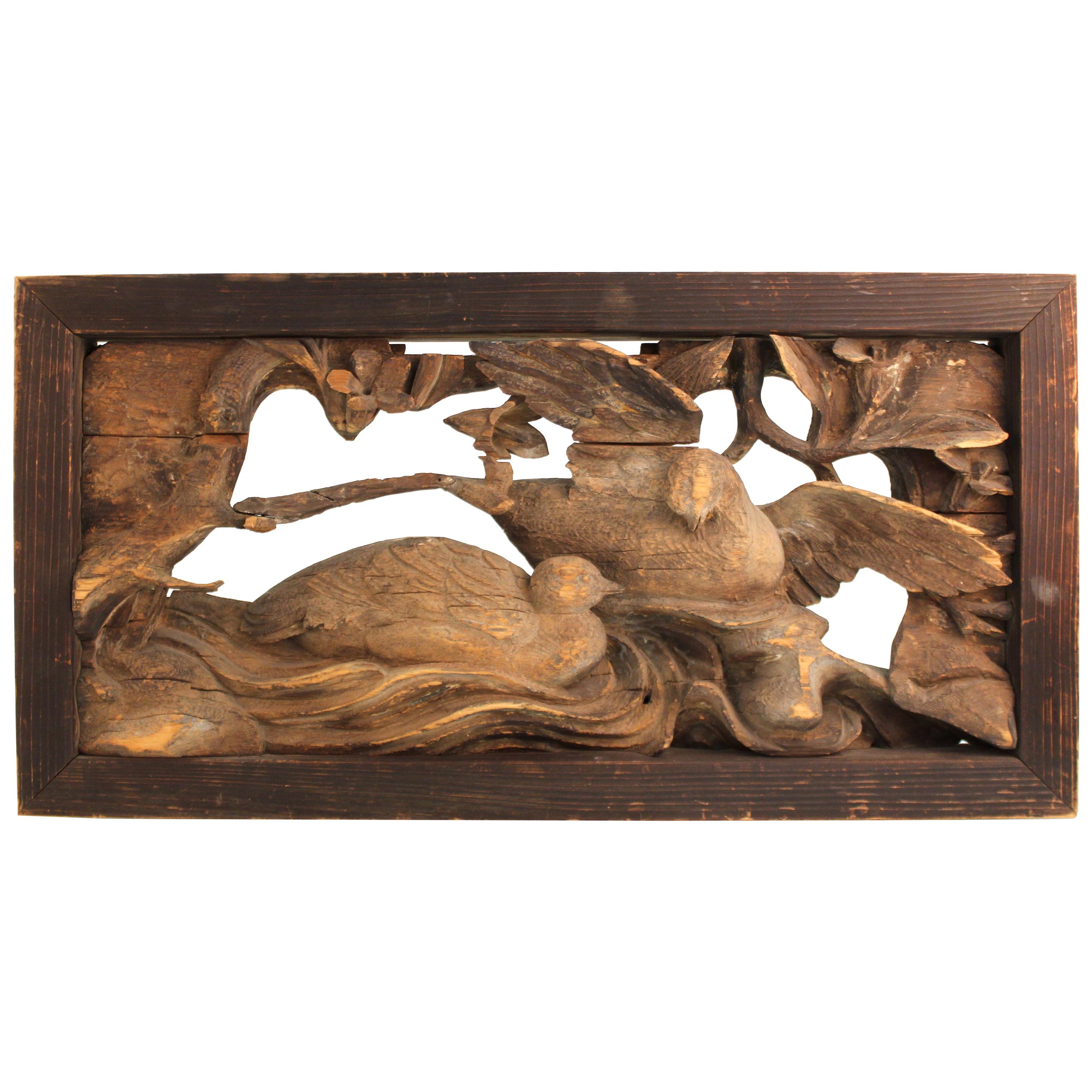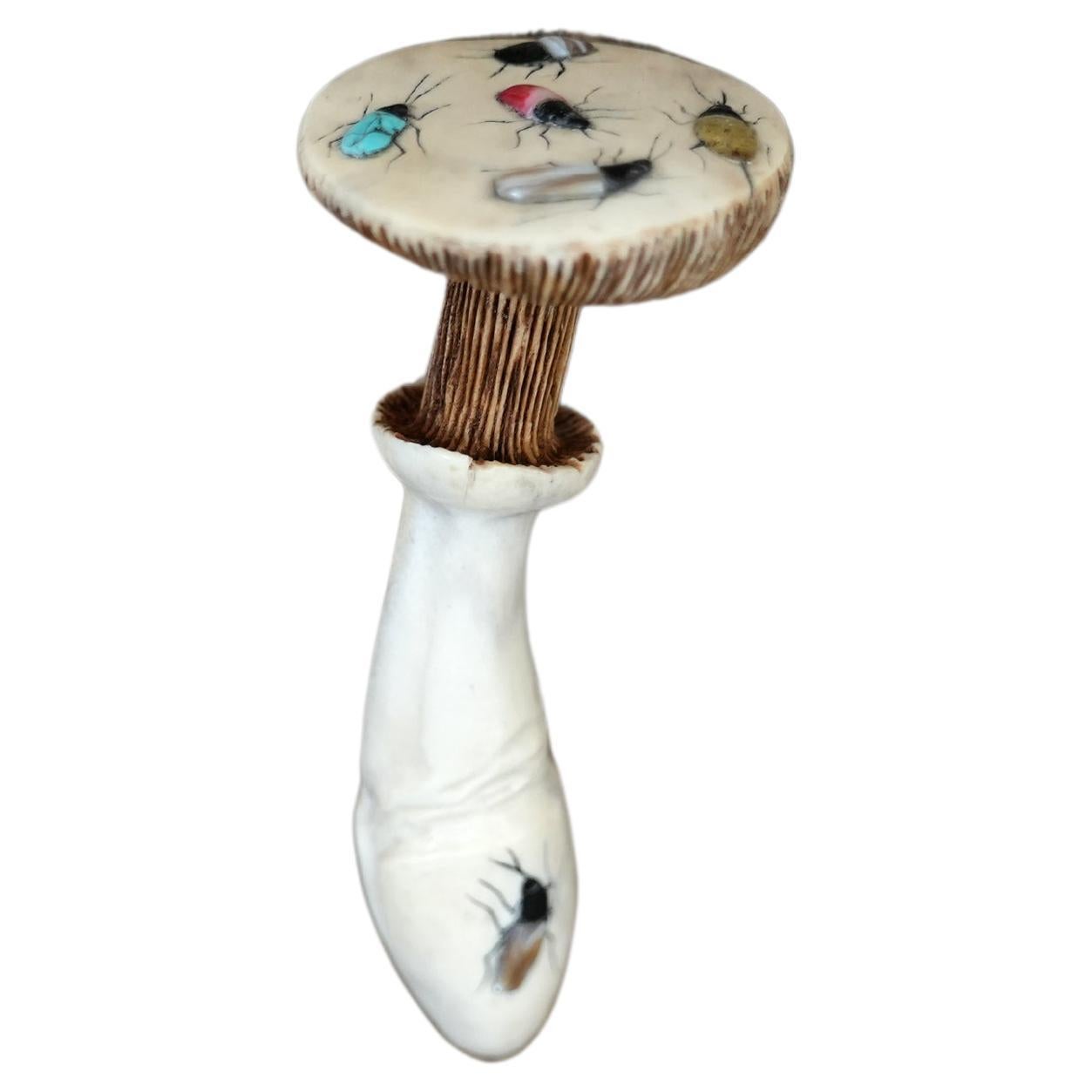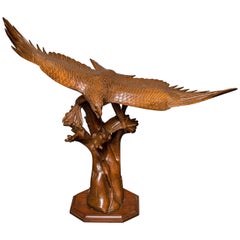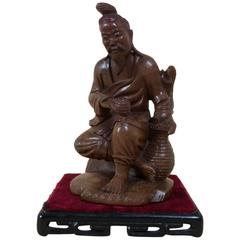
Japanese Fruitwood Carving of a Gentleman Smoking a Pipe
View Similar Items
1 of 10
Japanese Fruitwood Carving of a Gentleman Smoking a Pipe
About the Item
- Dimensions:Height: 8.5 in (21.59 cm)Width: 5.75 in (14.61 cm)Depth: 5.75 in (14.61 cm)
- Sold As:Set of 2
- Materials and Techniques:
- Place of Origin:
- Period:
- Date of Manufacture:circa 1890
- Condition:Wear consistent with age and use.
- Seller Location:London, GB
- Reference Number:Seller: TC91031stDibs: LU105665109103
You May Also Like
- A Japanese Bronze Monkey Smoking A PipeLocated in Dallas, TXA Japanese bronze monkey smoking a pipe. Early 20th centuryCategory
Early 20th Century Japanese Edo Sculptures and Carvings
MaterialsBronze
- Large Antique Japanese Carving of an EagleLocated in Hudson, NYLarge Antique Japanese Carving of an Eagle. Meiji period (1868 - 1912) carving of an eagle about to take flight. The sculpture is expertly c...Category
Early 20th Century Japanese Meiji Sculptures
MaterialsHardwood
- Japanese Paloma Wood Carving Okimono of JurojinLocated in New York, NYA Japanese carved paloma wood Okimono of Jurojin (god of longevity with a turtle). A symbol of long life, the sculpture also depicts a young boy representing the beginning of life. Carved from one piece of boxwood with a beautiful rich patina. Jurojin originated from the Chinese Daoist god, the old man of the South Pole, he may have been a historical figure of the Northern Song Dynasty...Category
Antique Late 19th Century Japanese Meiji Sculptures and Carvings
MaterialsBoxwood
- Japanese antique wood carving "Kirin's legs" /1800s/Shrines and temples carvingsLocated in Sammu-shi, ChibaDo you know Kirin? It is a type of legendary animal that appears in Chinese mythology, and is a spiritual animal that has been passed down in Japan since ancient times. At first glan...Category
Antique 19th Century Japanese Edo Sculptures and Carvings
MaterialsWood
- Japan 1890 Meiji Period Signed Okimono Sculpture of a Group of Skeletons SmokingLocated in Miami, FLSculptural signed Okimono from the Japanese Meiji period (1868-1912). Very rare, unusual and large sculptural assembling of a dysplaying piece of okimono. Created in Japan during the imperial period of the Meiji (1868-1912). This extraordinary okimono was carefully carved depicting a group of three intricately and realistically rendered carousing skeletons (Gaikotsu) in relax and resting position, drinking and smoking. Two of them, probably males representations are resting on a wicker sofa. The third, is a woman seated in a lower stool offering drinking cups of sake on a round tray. A small rectangular bench is arranged in the scene. The composition is displayed on a four-legged carved wood platform with an inlaid red plaque engraved with the artist's signature. The level of detail and the quality of the carving is truly exceptional. Has an exact measurements of 209.55 mm by 196.85 mm by 127.76 mm (8.25 x 7.75 x 5.03 Inches). After an extensive collection of data, comparables and references to this piece, we have only been able to find only three okimono sculptures like this with similar themes and the same quality of work. References Note: A similar carving of four skeletons playing an animated game of dominos, signed Shutaro in an inlaid rectangular red plaque, was sold in London by Christie’s South Kensington in October 14 2014, Lot 120 Sale 5546. References Note: A similar carving with four skeletons in an otherwise typical victorian scene of a photographer and three sitters signed Shutaro in an inlaid rectangular red plaque, was sold in Edinburgh at Lyon & Turnbull in November 7, 2018. References Note: A similar carving with five skeletons seated, playing cards and drinking, was sold in London by John Nicholson Fine Art on September 26, 2018. Meiji period, is an era of Japanese history that extended from October 23, 1868 to July 30, 1912. The Meiji era was the first half of the Empire of Japan, when the Japanese people moved from being an isolated feudal society at risk of colonization by Western powers to the new paradigm of a modern, industrialized nation state and emergent great power, influenced by Western scientific, technological, philosophical, political, legal, and aesthetic ideas. As a result of such wholesale adoption of radically different ideas, the changes to Japan were profound, and affected its social structure, internal politics, economy, military, and foreign relations. The period corresponded to the reign of Emperor Meiji. It was preceded by the Keio era and was succeeded by the Taisho era, upon the accession of Emperor Taisho. Okimono, is a Japanese term meaning for display an ornament; art object; or decorative object, usually displayed in a tokonoma or butsudan "Buddhist altar". It is an ornament or figure, especially one placed in a guest room. An okimono may be a small Japanese...Category
Antique 1890s Japanese Meiji Sculptures and Carvings
MaterialsWood
- Early Shinto Carving of Figure Referred to as Father JapanLocated in Hudson, NYShinto carving of figure referred to as Father Japan. Heian period (794 to 1185) sculpture made of hinoki wood in single piece construction called ichiboku...Category
Antique 15th Century and Earlier Japanese Sculptures and Carvings
MaterialsWood

